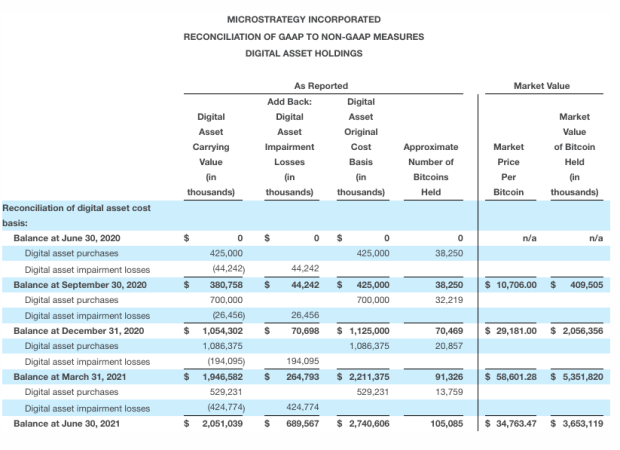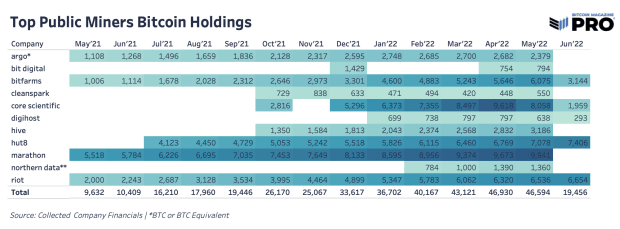The Crucial Role Of Wild Horses In Bitcoin Mining
Wild horses, the unruly mustangs of the bitcoin world, must make up a larger proportion of hash rate for optimal security of the network.
Just over 13 years ago a tsunami was silently and slowly building from the force of Satoshi Nakamoto’s newly released paper “Bitcoin: A Peer-to-Peer Electronic Cash System.” At the time only a handful of cryptography enthusiasts were aware of Bitcoin, and even they were grappling with its viability. And since the source code was still being refined and the genesis block had yet to be mined, Satoshi was grinding away in obscurity oblivious to the havoc Bitcoin was about to unleash on the world.
Any Bitcoin enthusiast knows that a fundamental element of Satoshi’s Bitcoin architecture is the selection of Proof-of-ork (PoW) as a consensus mechanism. Today when most people think of PoW, they immediately think of Bitcoin mining, and when they think of Bitcoin mining they garner images of ASIC-based mining servers lining a warehouse. But while Satoshi made analogies to gold mining, he never publicly used the word miner. The closest he (or she) probably came was the phrase “proof of worker.” He also talked about things like “your computer’s heat is offsetting your baseboard electric heating” regarding the cost of running a node and implying that he viewed the PoW function as something that would be performed largely by individuals in homes. The Satoshi of 2008 would likely have found the direction of the Bitcoin mining infrastructure baffling, and, maybe, like me, a bit concerning. The basis of my concerns are the emerging trends for the Bitcoin mining network to lack diversity in the scale of operations and toward a dependence on third-party controlled energy sources.
To illustrate this situation let’s look to the animal world. Consider three animals and their key characteristics: elephants, horses, and rabbits. Elephants are very large and mighty, slow to move over distance, hard to hide, reproduce slowly and are somewhat rare. Horses are powerful, can move quickly even over long distances; they can be difficult to find, they’re plentiful but building their population takes time. Rabbits are small and extremely quick over short distances, and fairly easy to spot individually; however, they are innumerable and can multiply at an astounding rate. Like all animals, some live in captivity and some in the wild. With this in mind, consider that the elephants are like the very large Bitcoin mining sites, that the rabbits are like the home miners, and that the horses are like the small to medium-sized mining operations. Regardless of the site size, those reliant on the grid for power are captive animals and those which produce and control their own power are wild.
In the beginning, Bitcoin’s mining infrastructure was all captive rabbits, just PCs running in offices, spare bedrooms, dorm rooms and garages. Over the first few years it was only the captive rabbits forming the network, but slowly a few captive horses started to appear as larger commercial efforts started to take over in back rooms, small warehouses, and old data centers. While there are plenty of captive rabbits and horses now, we are moving squarely into the era of the captive elephant. Bitcoin news feeds are littered regularly with announcements of new facilities which will house thousands of mining servers (ASICs), consume dozens or even hundreds of megawatts of electricity and cost hundreds of millions of dollars to bring online.

wild and captive animals as bitcoin minersCaptive elephant sites are very important as they bring massive computing power and security to the Bitcoin network, and in many cases, they are designed in partnership with utility companies to provide the stability and economic incentive to expand grid capacity. But there is danger in the growing trend for the Bitcoin network to become more dependent on them.
If you think of the mining servers as the food for the mining community then the elephants have a preferred seat at the dining table. Right now, server supply is extremely tight and unfortunately the elephants’ voracious appetites are leaving the horses and the rabbits to fend for scraps. It is certainly understandable that manufacturers like Bitmain, MicroBT and Bitfury give preference to the elephants given their limited production capacity and that the elephants simplify business for them. This is because they can make commitments to inventory months (or even years) in advance, they have the capital to make large deposits on their orders, and it is easier for the sales and support teams to deal with just a few elephant-class clients instead of a plethora of rabbits and horses. As a result, for the past few years rabbits and horses have largely been forced to buy products at a premium on the gray market, or use older technology, and in many cases, they’ve been left out entirely.
The elephants have been getting fatter and fatter by consuming such a massive portion of the food supply and this has created a famine for the rabbits and horses. Since technology refreshes are ultimately mandatory for all miners, if the food supply for the rabbits and horses does not improve soon it will result in death by starvation for many. Should that occur, the entire Bitcoin ecosystem takes on a large vulnerability. If a large super majority of the global hash were owned by the elephants, and given that elephants are easy to find(hunt) and slow to reproduce, then a targeted effort to impair them and compromise the network’s integrity takes on a realistic possibility. This could be from a coordinated effort involving legislation and regulation, directed attacks to physically destroy the sites, and/or even attacks at the elephants’ power sources. Such an attack against the Bitcoin network was initiated by China in the spring of 2021, so we must consider the possibility of another attack in the future. The next one might be larger, better funded, might involve arms and could even involve the confiscation and directed usage of the mining sites against the network. The more likely that such an attack would be successful, the more likely it is to occur – especially as Bitcoin has become a growing threat to the global financial infrastructure and to government power.
Bitcoin defended itself marvelously in the China attack of ‘21, but it would be foolish to assume that future attacks could be so easily turned back. For instance, imagine the impact of a subtle change in China’s strategy; instead of simply demanding all mining stop, what if China had confiscated all the hash rate and directed it against the network. If so, we’d be having very different discussions today about the state of mining and might even find ourselves in the middle of the first world war in the digital space. To be certain that Bitcoin’s defense systems remain at full readiness, it is crucial that a robust population of rabbits and horses, both in and out of captivity, exists to provide a reliable base layer of hashing power.
When the China attack of ’21 occurred, the Bitcoin network withstood the resulting 50-60% decrease in hashing power quite well. Because we now have the benefit of understanding that the network can maintain itself with this level of impairment, and that we want to remove the possibility of a hostile party confiscating enough hash power to wage a 51% attack, this gives us a good approximation of the maximum amount of ecosystem’s hash power that should be in elephant sites, especially captive elephant sites. The Bitcoin community should monitor these levels and never allow them to drift too far from 51%. Of course, the hashing power of the elephant’s will be split between wild and captive sites but because captive sites present a higher risk, setting an upper threshold to the amount of hashing power there is very important.
Before determining the appropriate split of captive and wild power sources for the elephants, let’s first delve deeper into the definitions of wild and captive sites. A captive site is one in which the site’s power is provided by an external, trusted third-party, or power master. This would typically be a utility company via a connection to a public power grid. Captive sites are usually in the vicinity of population centers as the economics of a grid power generally require a significant population and commercial activity to justify their existence.
A wild site is one in which a miner generates electricity on-site and that electricity moves to the mining equipment without passing through an intermediary. This would typically be implemented by using energy sources like flared gas, stranded gas, steam from geo-thermal sources, or small-scale hydroelectric solutions. Wind and solar power sources are possible as a portion of a mining site’s power solution, but their intermittent nature means that they are typically accompanied by a parallel and supporting grid solution. Wild sites require more technical ability to build and maintain, have higher capital costs, need more space, and often have special safety requirements. Wild sites are possible even in the most remote areas, under the harshest environmental conditions and do not require the economic impact of also supporting others. An extreme example of a wild site would be a satellite containing mining equipment launched into earth orbit and powered by an on-board nuclear reactor. There are an infinite number of possible locations for wild sites, while the number of possible captive sites is finite. Finally, because generating extremely large amounts of consistent, reliable energy is hard in remote locations, wild elephant sites are, and will be, somewhat rare.
There are no metrics currently available showing the split of captured hash power from wild hash power; however, wild sites of any size are currently very unusual, and it can be said with certainty that wild hash rate makes up well less than 10% of the global total, and it could easily be as low as 1%. This means that at least 90% or more is captive and reliant on a power master – a dangerous spot to be in. Obviously, allowing anyone to gain control of 51% of the network is dangerous, and since wild hash power is very difficult to secure through legislation or force, ideally 50% or more of the global hash power should be wild. However, for the next few years we will continue to have a huge and widening gap because massive increases in captive elephant hash power are already in motion. Our best hope in the near term (current halving cycle) would be to simply maintain something close to the present level and then strive for a 20% wild hash rate in the following halving cycle, and 50% in the subsequent one. Hitting these targets on the nose isn’t crucial, it is important only that we be in the rough vicinity.

If we were able to achieve a split like the one in the target chart shown above, then 50% of the hash would be overseen by elephants and 50% by rabbits and horses, and 55% of the hash would be captive and 45% would be wild. Assuming that that this hash is also spread out in a geographically balanced manner, it would make it impossible for any bad actor, or even a group of bad actors, to compromise the mining ecosystem.
To set a course to achieve these targets each animal type will need help. First let’s examine the rabbits. Foremost for the rabbits is access to mining servers. People buying individual machines have no clout or priority with the existing base of suppliers, and there are presently no retailers or even large distributors acting as a consolidation point. This results in rabbits being forced to buy on the spot market, and usually at a considerable premium to the prices paid by the elephants. Companies like Compass Mining do provide some means for individuals to get into mining, but those folks aren’t really rabbits as their units are hosted at horse and elephant sites. For a larger mix of mining to migrate toward rabbits the supply base must allocate a higher percentage of their inventory to individual sales, or they must establish a relationship with large retailers or distributors to support this market. It is encouraging that Blockstream and Square have both announced initiatives to develop ASICs, and that Jack Dorsey, Square’s CEO, has specifically commented on wanting to support further decentralization of the network, thus inferring support for the rabbits. As mentioned earlier, rabbits are likely to be predominantly captive because the difficulty of producing and maintaining power at a small scale is challenging; however, over time it is likely that in areas where residential solar power is popular there will be some proliferation of wild rabbits.
The course for elephants is somewhat the opposite of rabbits. There is such massive momentum in the development of captive elephant sites that they may be placing the integrity of the network at risk. For instance, Riot Blockchain, Inc. is in the process of expanding its site in Rockdale, Texas to 700MW. This is very impressive and the accompanying leap in hashing power will initially help further secure the network; however, if most network expansion comes through similar captive elephant sites, then collectively these sites have the potential to become an Achilles’ heel. This is exacerbated by the fact that these captive elephant sites are being developed by the small number of organizations which have access to the enormous capital and resource requirements. Certainly, there is no implication that organizations like Riot should scale back their expansion efforts but, hopefully they will see that continuing a strategy of only developing captive elephant sites exposes both them and the network.
As crucial as development of wild elephants is to the health of the Bitcoin mining ecosystem, over the next handful of years nothing is more important than the expansion of wild horse sites. There are already several companies like Great American Mining, Upstream Data, Digital Shovel and my company, Barefoot Mining, which are building infrastructure equipment or doing development for wild horse sites. Interestingly, rapidly increasing wild horse sites is not dependent on finding energy; known stranded and flared gas sources alone have the potential to meet all wild horse needs. Adding in small-scale hydro and geo-thermal sources makes energy supply essentially infinite. Development of these sites is mostly dependent on raising capital. For instance, a wild horse site of about 2MW requires capital of $5 million to $10 million depending on the energy source and the mining equipment selected. To date, traditional commercial money-lending sources have been largely uninterested in supporting projects like this, especially for the small to medium-sized companies typically behind them. As a result, this usually forces these companies into fund-raising mode, but this is a time-consuming and frustrating process. This is because by the time a business plan is created and money has been raised, mining equipment costs and availability, and market conditions usually have changed too. In turn this means that the capital needs and pro-forma of the deal have changed so that a return to the investors is required. This can become a vicious cycle.
The good news is that over the past few years Barefoot Mining and others have brought wild horse sites into the network proving their technical and economic viability. This is leading to more confidence from investors in wild horse sites and more flexibility in how deals are created. This gives me great optimism that we are on the cusp (or in the midst) of a boon in the development of wild horse sites. Interest in this segment should continue to skyrocket and attract the capital it needs to become a major segment of the mining community. The energy is just waiting to be put to use.
The Bitcoin mining ecosystem has proven itself to be incredibly strong. It has weathered an attack from one of the largest, most powerful nations on earth without missing a beat and sometime early next year it will achieve a new all-time high in hash rate. There is a massive amount of money flowing into mining and on the surface all is well. However, it would be foolish for the Bitcoin mining community to assume that it is infallible and growing ever stronger. There is clearly a possibility of the mining network growing too asymmetrically, too top-heavy, and too captive, resulting in an unbalanced and exposed ecosystem. Nature has already taught us a lot about balance and survival. When an apex predator becomes too dominant and the population below it dwindles too far, the entire ecosystem collapses upon itself. Let’s encourage and support the rabbits, and especially the wild horses, so that the diversity of the Bitcoin mining ecosystem becomes its great strength instead of its greatest weakness.
This is a guest post by Bob Burnett. Opinions expressed are entirely their own and do not necessarily reflect those of BTC Inc. or Bitcoin Magazine.









